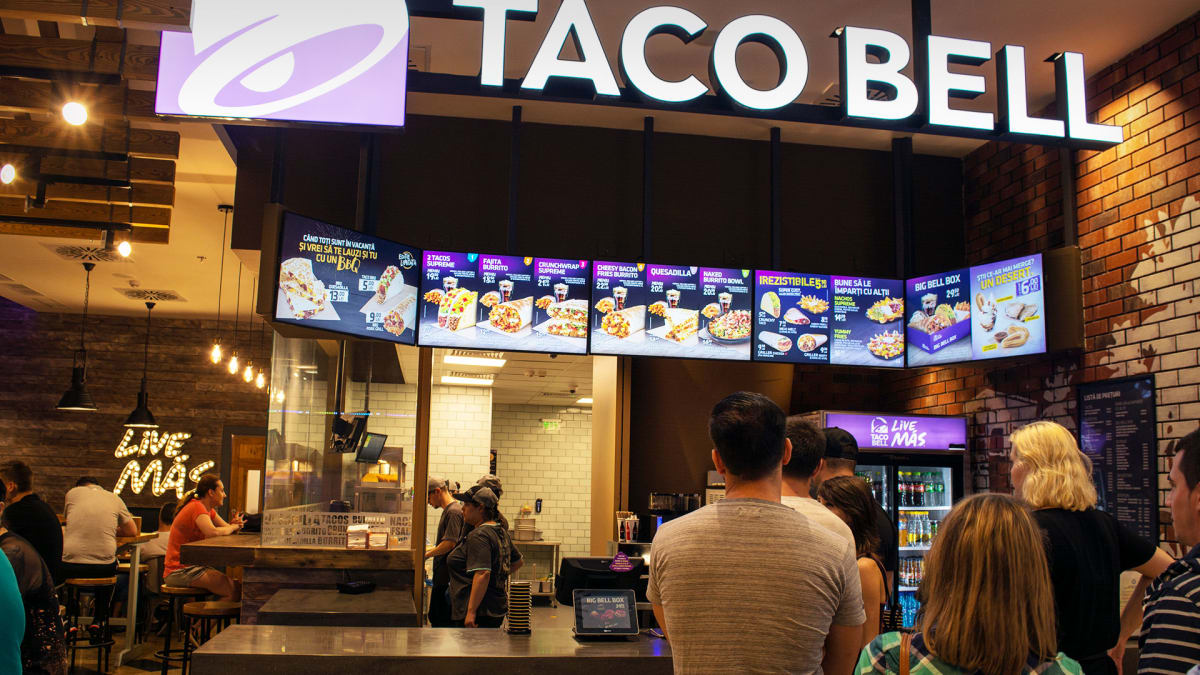
There are few things fast-food customers love more than a value deal -- Restaurant Brands International (QSR)'s Burger King has frequently flip-flopped between selling the the 2 For $5 Your Way Deal and the 2 For $6 Your Way Deal to much customer mirth while many are still angry at privately-held Subway for nixing the $5 footlong that has been around since 2003.
Another chain known for its combo boxes and "cravings packs," Yum! Brands (YUM)-owned Taco Bell this year launched a $5 breakfast box with a Grande Toasted Breakfast Burrito, hash browns, two Cinnabon Delights donut holes and a warm drink and has also long had a daytime $5 box with a burrito, taco, chips with nacho sauce and a soft drink.
In general, $5 has been shaping up to be the dividing line between what customers consider to be a good deal and a regular menu item. But it's a price point that we now see less and less often as food inflation puts pressure on the chains.
Three New Taco Bell Promotions Are In The Works
At Taco Bell specifically, the average menu item got 14.6% more expensive in the last year -- from an average $2.94 in September 2021 to $3.37 in October 2022.
But even as many chains raise prices, deals and promotions are still important for maintaining customer interest. In Ohio, Taco Bell has been spotted testing three new $6 promotions -- each one features a main item like the Mexican Pizza, Crunchwrap Supreme or Cheesy Gordita Crunch with a Doritos Locos Tacos and a medium-size fountain drink.
The same "Cravings Trios" were tested in Omaha, Nebraska as $5 promotions last summer but the cost of raw ingredients like beef has gone up since then.
In Ohio, the promotion is known as the $6 Cravings Trio and will be available at a selection of Columbus locations to test whether such a deal would be worth bringing to the rest of the country.
This Is Why Fast Food Is Getting Kind Of Expensive
Despite raising prices (the average Wendy's (WEN) menu item now costs over 30% more than it did in 2021), fast-food chains have seen no shortage of customers. That's partly because people who may have previously gone to pricier restaurants increasingly look for cheaper options.
For low-income families, fast food has also long been a way to get a hot meal cheaper than it would cost to buy individual ingredients.
A few months ago, Placer.ai calculated that while overall restaurant visits fell 7.6% in July and 13.7% in August, traffic to McDonald's (MCD) and Chipotle (CMG) increased by a respective 4.7% and 3.1%.
In a summer earnings call, Chipotle chief executive Brian Niccol said that higher-income customers were coming into its stores more frequently and ordering more sides and add-ons while lower-income customers were also coming in but largely ordering one entrée with some of the less expensive proteins.
"What we saw was probably not all that different from what people have been saying," Niccol told analysts and investors. "The low income consumer definitely has pulled back their purchase frequency. Fortunately, for Chipotle, that is not the majority of our customers."







